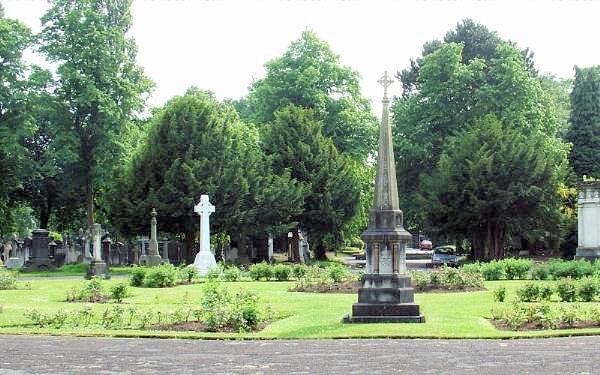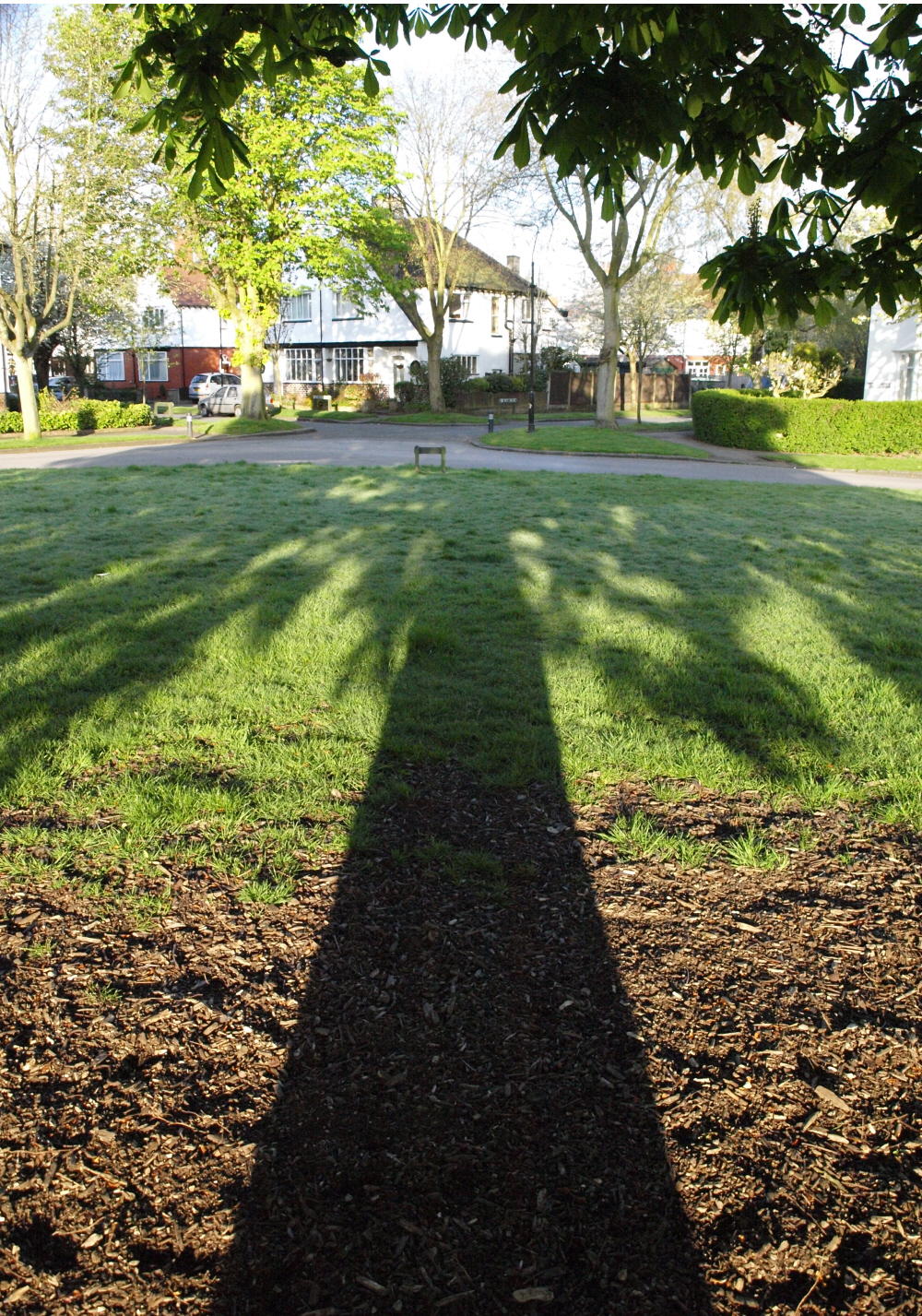|
Withington Metrolink Station
Withington is a tram stop on the South Manchester Line (SML) of Greater Manchester's light-rail Metrolink system. It is located on the west side of Princess Road on the fringe of Withington in south Manchester, England. The tram stop was opened on 23 May 2013. It was built in a cutting on a section of abandoned railway which was re-opened for light rail operation. The line was originally opened in 1880 by the Cheshire Lines Committee as the Manchester South District Line, which ran trains from Manchester Central railway station. The line was closed in 1967, but was re-opened in the 21st century as part of the Metrolink network. Trams now run from through Withington to Manchester city centre tram stops and on to . - publicity brochure History In 1880, the Midland Railway, in partnership with the Cheshire Lines Committee, opened its new Manchester South District Line out of Manchester Central Station. After Chorlton-cum-Hardy railway station, the line ran south-east throug ... [...More Info...] [...Related Items...] OR: [Wikipedia] [Google] [Baidu] |
Withington
Withington is a suburb of Manchester, England. Historically part of Lancashire, it lies from Manchester city centre, about south of Fallowfield, north-east of Didsbury and east of Chorlton-cum-Hardy. Withington has a population of just over 14,000 people, reducing at the 2011 census to 13,422. In the early 13th century, Withington occupied a feudal estate that included the townships of Withington, Chorlton-cum-Hardy, Moss Side, Rusholme, Burnage, Denton and Haughton, held by the Hathersage, Longford and Tatton families, and within the Manor of Manchester and Hundred of Salford in historic county boundaries of Lancashire. Withington was largely rural until the mid-19th century when it experienced rapid socioeconomic development and urbanisation due to the Industrial Revolution, and Manchester's growing level of industrialisation. Withington became part of Manchester in 1904. Today, the residents of Withington comprise a mixture of families, university students a ... [...More Info...] [...Related Items...] OR: [Wikipedia] [Google] [Baidu] |
Manchester Metrolink
Manchester Metrolink (branded locally simply as Metrolink) is a tram/ light rail system in Greater Manchester, England. The network has 99 stops along of standard-gauge route, making it the most extensive light rail system in the United Kingdom. Metrolink is owned by the public body Transport for Greater Manchester (TfGM) and operated and maintained under contract by a Keolis/ Amey consortium. In 2021/22, 26 million passenger journeys were made on the system. The network consists of eight lines which radiate from Manchester city centre to termini at Altrincham, Ashton-under-Lyne, Bury, East Didsbury, Eccles, Manchester Airport, Rochdale and Trafford Centre. It runs on a mixture of on-street track shared with other traffic; reserved track sections segregated from other traffic, and converted former railway lines. Metrolink is operated by a fleet of 147 high-floor Bombardier M5000 light rail vehicles. Each service runs to a 12-minute headway; stops with more than one serv ... [...More Info...] [...Related Items...] OR: [Wikipedia] [Google] [Baidu] |
Withington Railway Station (other) , former station in Greater Manchester, originally named Withington
{{Disambiguation, station ...
Withington railway station may refer to: * Withington railway station (Gloucestershire), former station in Withington, Gloucestershire, England * Withington railway station (Herefordshire), former station in Withington, Herefordshire, England * Withington tram stop, a stop on the Manchester Metrolink system in Greater Manchester *Withington and West Didsbury railway station Withington and West Didsbury railway station (previously named Withington railway station and Withington & Albert Park railway station) is a former station in West Didsbury, in the southern suburbs of Manchester, England, United Kingdom. The s ... [...More Info...] [...Related Items...] OR: [Wikipedia] [Google] [Baidu] |
Manorialism
Manorialism, also known as the manor system or manorial system, was the method of land ownership (or "tenure") in parts of Europe, notably France and later England, during the Middle Ages. Its defining features included a large, sometimes fortified manor house in which the lord of the manor and his dependents lived and administered a rural estate, and a population of labourers who worked the surrounding land to support themselves and the lord. These labourers fulfilled their obligations with labour time or in-kind produce at first, and later by cash payment as commercial activity increased. Manorialism is sometimes included as part of the feudal system. Manorialism originated in the Roman villa system of the Late Roman Empire, and was widely practiced in medieval western Europe and parts of central Europe. An essential element of feudal society, manorialism was slowly replaced by the advent of a money-based market economy and new forms of agrarian contract. In examining the o ... [...More Info...] [...Related Items...] OR: [Wikipedia] [Google] [Baidu] |
Hough End Hall
Hough End Hall is a historic house now in Chorlton-cum-Hardy, (originally in Withington), Manchester, North West England. It was built in 1596 during the reign of Queen Elizabeth I by Sir Nicholas Mosley (''ca.'' 1527–1612), when he became Lord of the Manor of Manchester and of the dependent Manor of Withington (Chorlton-cum-Hardy was at the time a township within the Manor of Withington). The Mosleys were an influential Mancunian family from the 16th century onwards, and prominent in the affairs of the Manchester district for two and a half centuries. Description The house stands on Nell Lane, just north-east of Barlow Moor Road. Behind it runs the route of the Metrolink to East Didsbury and Manchester Airport, and Chorlton Brook runs past it on the north side (Mauldeth Road West passes it on the southern side). It is a brick, three-storey brick building with gabled wings, which are ornamented with balls. The central portion of the house is surmounted with a parapet in the ... [...More Info...] [...Related Items...] OR: [Wikipedia] [Google] [Baidu] |
Southern Cemetery, Manchester
Southern Cemetery is a large municipal cemetery in Chorlton-cum-Hardy, Manchester, England, south of the city centre. It opened in 1879 and is owned and administered by Manchester City Council. It is the largest municipal cemetery in the United Kingdom and the second largest in Europe. History Manchester Southern Cemetery was originally laid out on a plot of land, that cost Manchester Corporation £38,340 in 1872. Its cemetery buildings were designed by architect H. J. Paull and its layout attributed to the city surveyor, James Gascoigne Lynde. The cemetery was consecrated by the Bishop of Manchester, Bishop James Fraser on 26 September 1879, and formally opened on 9 October 1879 by the Mayor of Manchester, Charles Grundy. Within the cemetery mortuary chapels were erected for Anglicans, Nonconformists, and Roman Catholics, linked by an elliptical drive, and a Jewish chapel at the west corner of the site. The original cemetery is registered by English Heritage in the Register ... [...More Info...] [...Related Items...] OR: [Wikipedia] [Google] [Baidu] |
Chorlton-cum-Hardy
Chorlton-cum-Hardy is a suburban area of Manchester, England, southwest of the Manchester city centre, city centre. Chorlton (ward), Chorlton ward had a population of 14,138 at the United Kingdom Census 2011, 2011 census, and Chorlton Park (ward), Chorlton Park 15,147. By the 9th century, there was an Anglo-Saxon settlement here. In the Middle Ages, improved drainage methods led to population growth. In the late Victorian era, Victorian and Edwardian periods, its rural character made it popular among the middle class. The loss of its railway station, the conversion of larger houses into flats or bedsitters, and significant social housing development to the south of the area changed its character again in the 1970s. However, the existing Manchester Metrolink tram stop called Chorlton was built on the site of that former railway station and from Manchester, it is served by East Didsbury trams and Manchester Airport trams. Historically, Chorlton was a village on Lancashire's sou ... [...More Info...] [...Related Items...] OR: [Wikipedia] [Google] [Baidu] |
Trackbed
The track bed or trackbed is the groundwork onto which a railway track is laid. Trackbeds of disused railways are sometimes used for recreational paths or new light rail links. According to Network Rail, the trackbed is the layers of ballast and sub-ballast above a prepared subgrade/formation (see diagram). It is designed primarily to reduce the stress on the subgrade. Other definitions include the surface of the ballast on which the track is laid,, p. 386. the area left after a track has been dismantled and the ballast removed or the track formation beneath the ballast and above the natural ground. The trackbed can significantly influence the performance of the track, especially ride quality of passenger services. See also * Embankment (transportation) * Roadbed * Subgrade In transport engineering, subgrade is the native material underneath a constructed road,http://www.highwaysmaintenance.com/drainage.htm The Idiots' Guide to Highways Maintenance ''highwaysmaintenence. ... [...More Info...] [...Related Items...] OR: [Wikipedia] [Google] [Baidu] |
Tram
A tram (called a streetcar or trolley in North America) is a rail vehicle that travels on tramway tracks on public urban streets; some include segments on segregated right-of-way. The tramlines or networks operated as public transport are called tramways or simply trams/streetcars. Many recently built tramways use the contemporary term light rail. The vehicles are called streetcars or trolleys (not to be confused with trolleybus) in North America and trams or tramcars elsewhere. The first two terms are often used interchangeably in the United States, with ''trolley'' being the preferred term in the eastern US and ''streetcar'' in the western US. ''Streetcar'' or ''tramway'' are preferred in Canada. In parts of the United States, internally powered buses made to resemble a streetcar are often referred to as "trolleys". To avoid further confusion with trolley buses, the American Public Transportation Association (APTA) refers to them as "trolley-replica buses". In the Unit ... [...More Info...] [...Related Items...] OR: [Wikipedia] [Google] [Baidu] |
GMPTE
Greater Manchester Passenger Transport Executive was the public body responsible for public transport in Greater Manchester between 1974 and 2011, when it became part of Transport for Greater Manchester. SELNEC PTE Until 1969, the conurbation surrounding Manchester was divided between the two administrative counties of Lancashire and Cheshire and a number of county boroughs, such as Manchester, Salford, Stockport or Bolton. To comply with the Transport Act 1968, on 1 April 1969 the SELNEC Passenger Transport Executive was formed. ''SELNEC'' stood for ''South East Lancashire North East Cheshire'', a joint authority of the various local councils. From 1 November 1969, the PTE took over the bus fleets of 11 municipalities, and operationally, the organisation was split into three divisional areas, Northern, Central, and Southern: Northern *Bolton Corporation (249 vehicles) * Bury Corporation (96 vehicles) * Leigh Corporation (57 vehicles) *Ramsbottom Urban District Council ... [...More Info...] [...Related Items...] OR: [Wikipedia] [Google] [Baidu] |
Greater Manchester Council
The Greater Manchester County Council (GMCC) was the top-tier local government administrative body for Greater Manchester from 1974 to 1986. A strategic authority, with responsibilities for roads, public transport, planning, emergency services and waste disposal, it was composed of 106 directly elected members drawn from the ten metropolitan boroughs of Greater Manchester. The Greater Manchester County Council shared power with ten lower-tier district councils, each of which directed local matters. It was also known as the Greater Manchester Council (GMC) and the Greater Manchester Metropolitan County Council (GMMCC). Established with reference to the Local Government Act 1972, elections in 1973 brought about the county council's launch as a shadow authority, several months before Greater Manchester (its zone of influence) was officially created on 1 April 1974. The Greater Manchester County Council operated from its County Hall headquarters on Portland Street in central Manch ... [...More Info...] [...Related Items...] OR: [Wikipedia] [Google] [Baidu] |







.png)